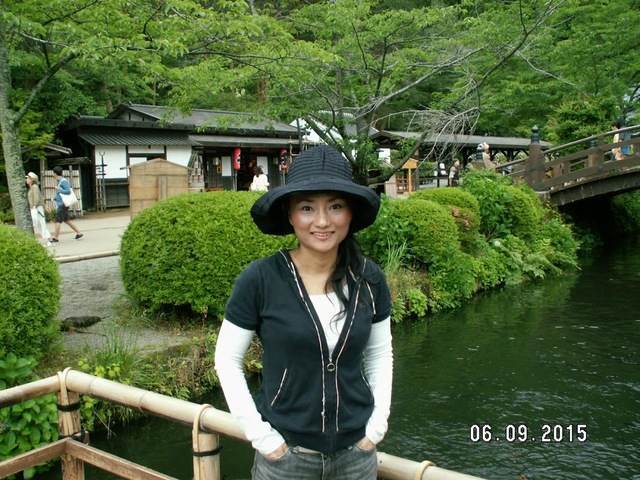過去の記憶は時間の経過によって変化していくようだ。
Memories do seem to change with the passage of time.
昔過ぎたことが新たな側面で表れる時がある。
At the moment an event occurs
it appears with a new side.
記憶は事実に基づいて、
当時の感情と結びつき、
記憶貯蔵庫にファイル化され保管される。
Depending on circumstances,
a memory tied up with emotions of the time
and it will be stored in the memory bank as files.
その記憶の貯蔵庫から記憶自体が
何かのきっかけで漏れだす時がある。
Sometimes the memory silently leaks from the memory storage
as something that triggers us.
意識を持って呼び戻された記憶とは違い、
意識を伴わないその記憶は
見る側の指定された視点を持たないため、
3次元的な性質を持つ。
Unlike consciously recalled memories,
it has three-dimensional properties
because it is not propagated with an only first-person perspective.
一人の人の固有の視点を記憶を捉える視点として
1次元に置き換えて考えるなら、
相手、つまり他人の視点で記憶を見ることを
2次元に例えることができる。
If we consider one’s individual viewpoint of memory is as one-dimension,
seeing a memory with the opponent perspective
can be shifted as two-dimension.
そうすると、3次元というのは、
記憶の保有者(1次元)
関わった対象の他人(2次元)
それらの二つの構成要素が
一定の空間内に織り交ざっている状態を
3次元に取ることもできる。
The third dimension can be defined in a constant space
where those two components are interwoven,
with such the memory holder as one-dimension
and the involved opponent as two-dimension.
その3次元の記憶は自分、
他分を基本要素にできたことが、
自動再生されていくような感じになる。
Such three-dimensional memory is can be played automatically
with the basic components of the self-role and others in it.
まるで、自分が映られている映像を
眺めるような感じになる。
It is like looking at a video in which
the memory holder is taking a role.
私だけの解釈や見方を持つ1次元的記憶は、
自分の眼が見える範囲のように視野が限られている。
The one-dimensional memory with a singular perspective
or interpretation is a limited visual field
just like the range of one’s own eyes.
人の視野は180度、
つまり全面、左右の90度角度までだ。
People’s all visible range is 180 degree
including both 90 degrees left and right.
なので、その180度以外の
背面の180度を見ることはできない。
Therefore, half of the ranges
are something people cannot see.
見えたことによる自分の感情だけが
記憶の全面像になる。
A memory becomes full face
only with emotion tied to the way we visualize it.
相手の態度、相手に現れた感情解釈などと結びついて、
それら見えた映像が自分の感情に
再構成されていることは2次元記憶になる。
Two-dimensional memory is like
reconstructed interpretation
against one’s attitude to others
and others reflected emotions,
often appearing is knotted with our emotional response.
この2次元記憶も角度が180度を超えることができず、
見る側の1次元が相手に現れた1次元と
一方的な入力を持つだけなので、
記憶全面を見てはいない。
The two-dimensional memory of angle
cannot exceed more than 180 degrees
and this one-dimension from the spectator
and the other opponent’s one-dimension
still only has one-way to input,
so they can’t perceive the entire memory.
それら1次元的な記憶、
2次元的な記憶は
その記憶を保有している所有者だけが再生したり、
しなかったりできる。
Those memories in one-dimension
or two-dimension can be recorded play or not,
but only by the owner who holds the memories.
しかし、自分、他分、ことの分の3つの側面をもつ3次元的な記憶は
ある記憶を上から眺めることになるので、
隠れていた背面も見ることができる。
However, three-dimensional memory
can see the hidden back side of memory
because it has three aspects that one-self,other-self, it-self
and with them can look on a certain memory from above.
自分だけの視角度の180度に、
残りの半分の180度が加わるので
見える角度が360度になる。
To the prospector’s angle of visibility of 180 degrees
will be added remaining angle of 180
so that the visual angle becomes 360 degrees.
ある記憶が全面、
全体を観察できるようになると、
1次元や2次元が持つ1人称観察者視点の限界を超えるようになる。
A memory observed on all sides
and entire shape can rise
beyond the limitation of the first-person observer’s viewpoint.
ある見方が3人称観察者視点になると、
感情の在りようも構成されている対象の一つになるので、
全体の部分になれる。
If a perspective begins to have third-person observer’s viewpoint,
the state of emotion will become one of the objects
that are constructed in parts to fit into a whole shape.
特定の感情が全体の部分になると、
特化された特異性の重さが無くなる。
When a particular emotion becomes part of the whole,
the weight of peculiarity that specialized can be lost.
その特定された記憶が重さを無くすと、
その記憶を飛ばすことができる。
If the specialized memory loses its heaviness,
then the memory can be lost.
重かった記憶が飛ばされると、
そこに余分の空間ができ、
新たな記憶が入れるようになる。
When the heavier memory is discharged,
there will be extra space to input a new memory.
その新たに空いた空地は3次元になるので、
入れられる記憶の容量も従って増える。
As the newly opened free space becomes three-dimensional,
the packable storage increases accordingly.
それら記憶を次元的に分類し観察する方法を
学習の記憶法向上に活かすことができる。
The method of categorizing dimensionally
and observing memories
can be used to improve our learning capacity.
つまり、人が過去から引きずった記憶が溜まった
記憶貯蔵庫を再整備することによって、
容量をリサイクルしていく方法である。
In other words, it is a way of recycling memory capacity
by restoring memory storage dragged from the past.
人の記憶力には天才や秀才を除き、
容量が決まっている。
Human memory capacity is limited
except for the genius or brilliant.
その決まった容量に
過去のエピソード記憶が大部分を占めているため、
想い出以外は使い道がない。
The storage is mostly occupied by episodic memories
which happened in the past,
and there is no usage other than for nostalgia.
しかし、エピソード記憶が占めている空間を空ければ、
記憶の容量を増やすことができる。
But if able to clear out space
where episode memories are stocked,
the capacity can be increased.
先ずは、使い道の無い過去の記憶を一度全て開けだし、
捨てるものは捨て、
飛ばすことは飛ばし、
放つべきものは感情から放てる作業を始めることによって、
自分の潜在能力の容量を増やせる。
For the first step,
open up all the useless past memories,
abandon which should be thrown out;
send away which you should let go,
let out which should be released from emotion;
starting with such operations
one’s potential capacity can increase.
過ぎた記憶は善でも悪でも変えることはできないが、
それらを自由に放つことは今、できる。
Past memories cannot be changed
whether they are good or bad,
but in the now you CAN let them go
and free yourself simultaneously.
過去の苦しい記憶に対し、
今に癒されることを待つより、
自分ができることである『放つ』ことで能動的になれる。
Instead of waiting to be healed
for the painful past memories,
one can learn to be active and let it go.
Everyone is capable to do so.
つまり、記憶を3次元化にして
映像のように再生し、
再生できたらそれらにまつわる感情を放てる。
To sum up, break down memories into three dimensions
and replay them like a video,
and when it is playing release emotions that attached to it.
もしかしたら、この3次元的な記憶の放ち方は、
坐禅を行う時に現れる雑念を『追わない』ことと
根本原理が類似いるかも知れない。
Perhaps, this three-dimensional memory release technique
may be similar to a Zen teaching:
“Do not chase distraction” of worldly thoughts
that appears when doing meditation.
新たなことを手に入れたければ、
必ず、既に持っているものを手放さないと
他を持つことができない。
If someone wants to get something new,
inevitably they must be emptied from what they already have;
otherwise, they can’t hold a new one.
新たな記憶を入れるためにも必ず、
既に占拠している古い記憶を手放さなければならない。
To input a memory also we must let go of old memories
that already have occupied the brain.
目の前に現れた雑念を拾わなければ、
それは浮かんできたように自然に消えていく。
If you don’t pick up the worldly thoughts that appeared in front of you,
it will disappear naturally as it floats away.



















